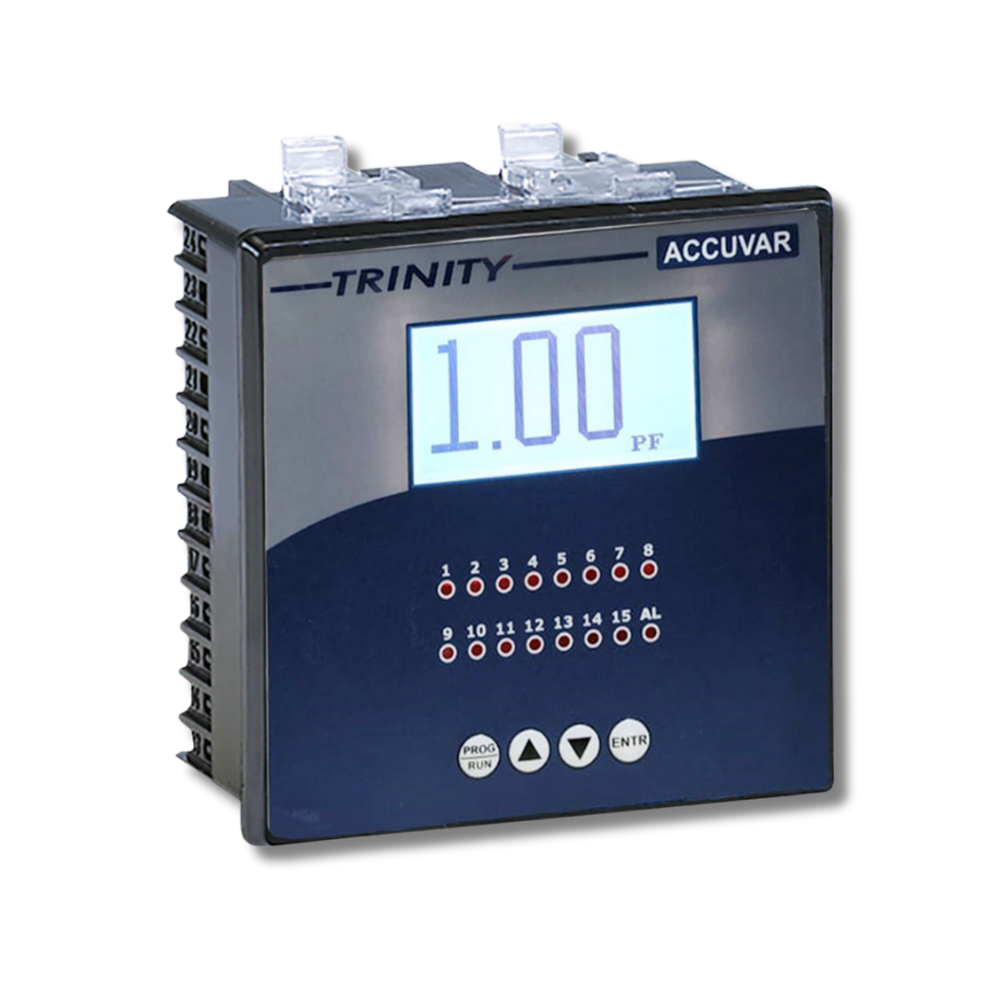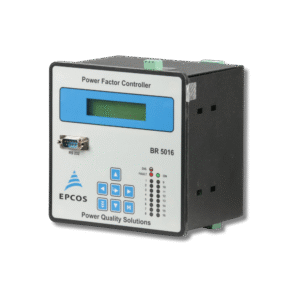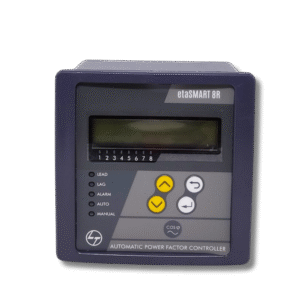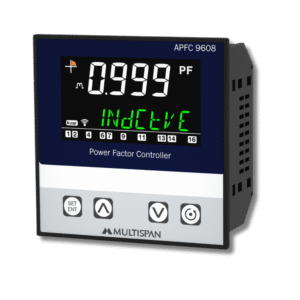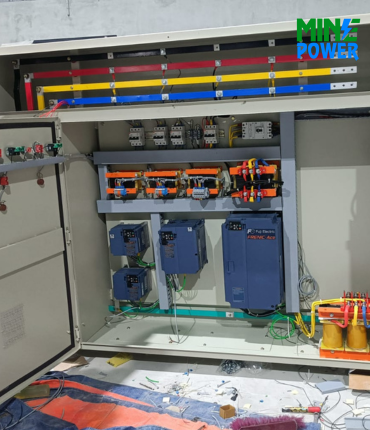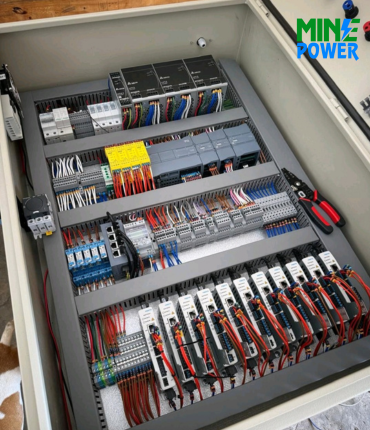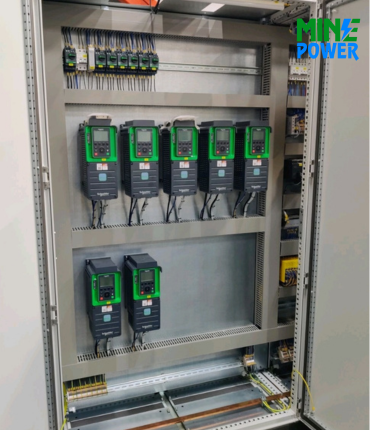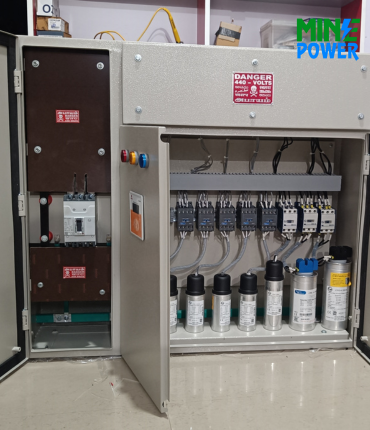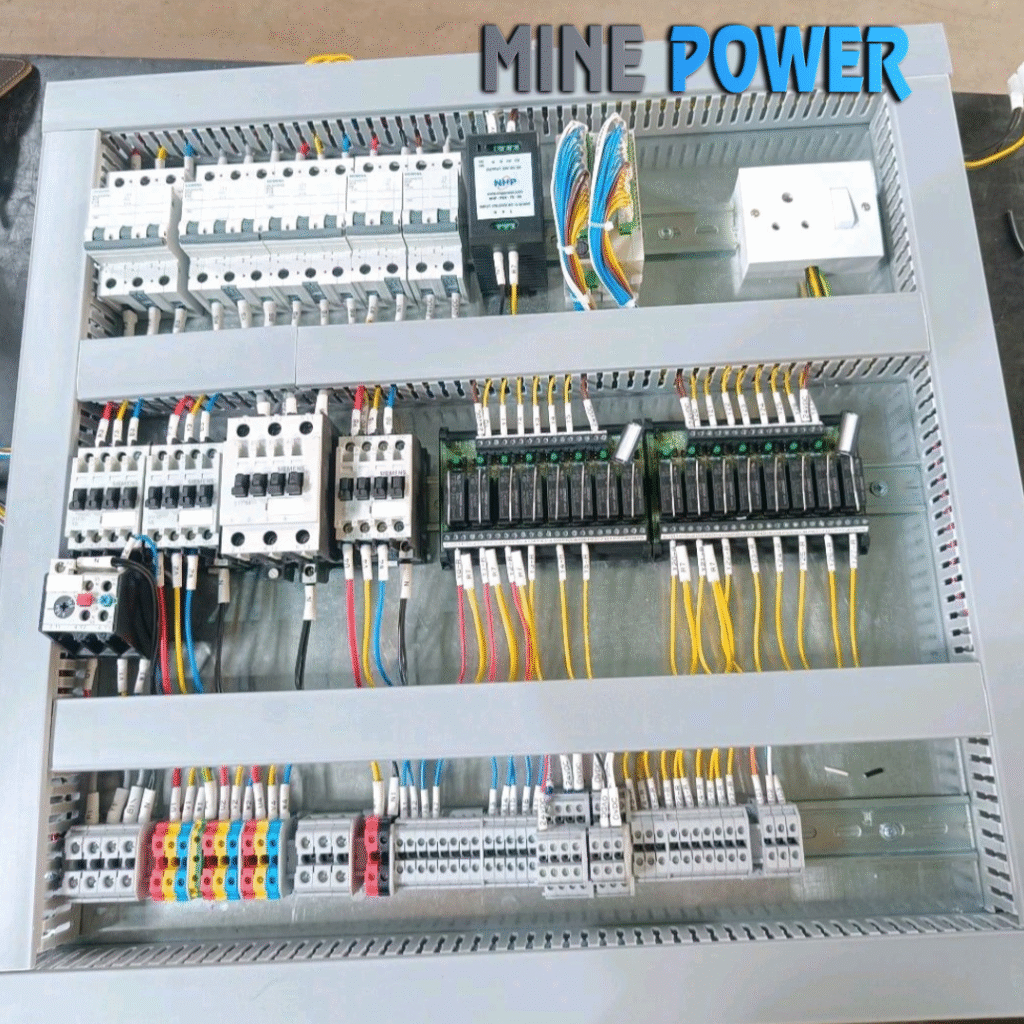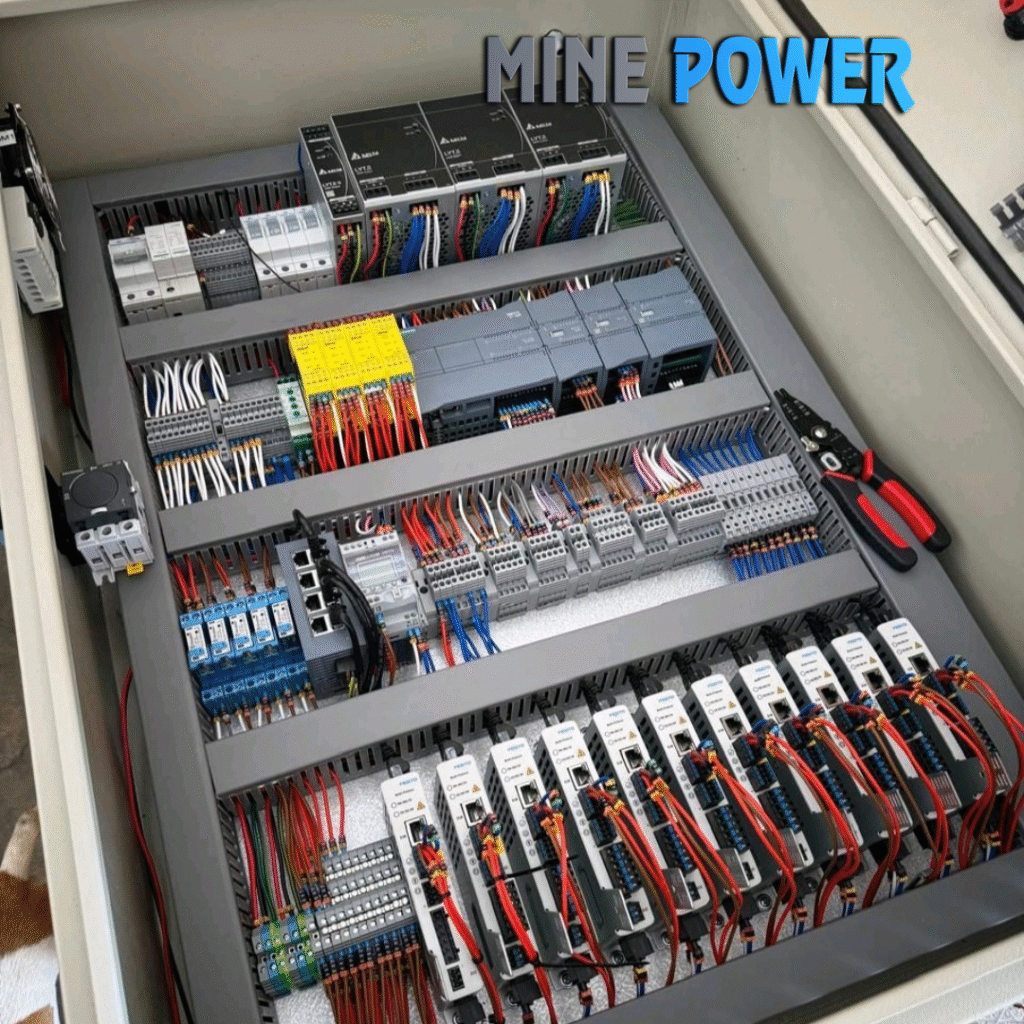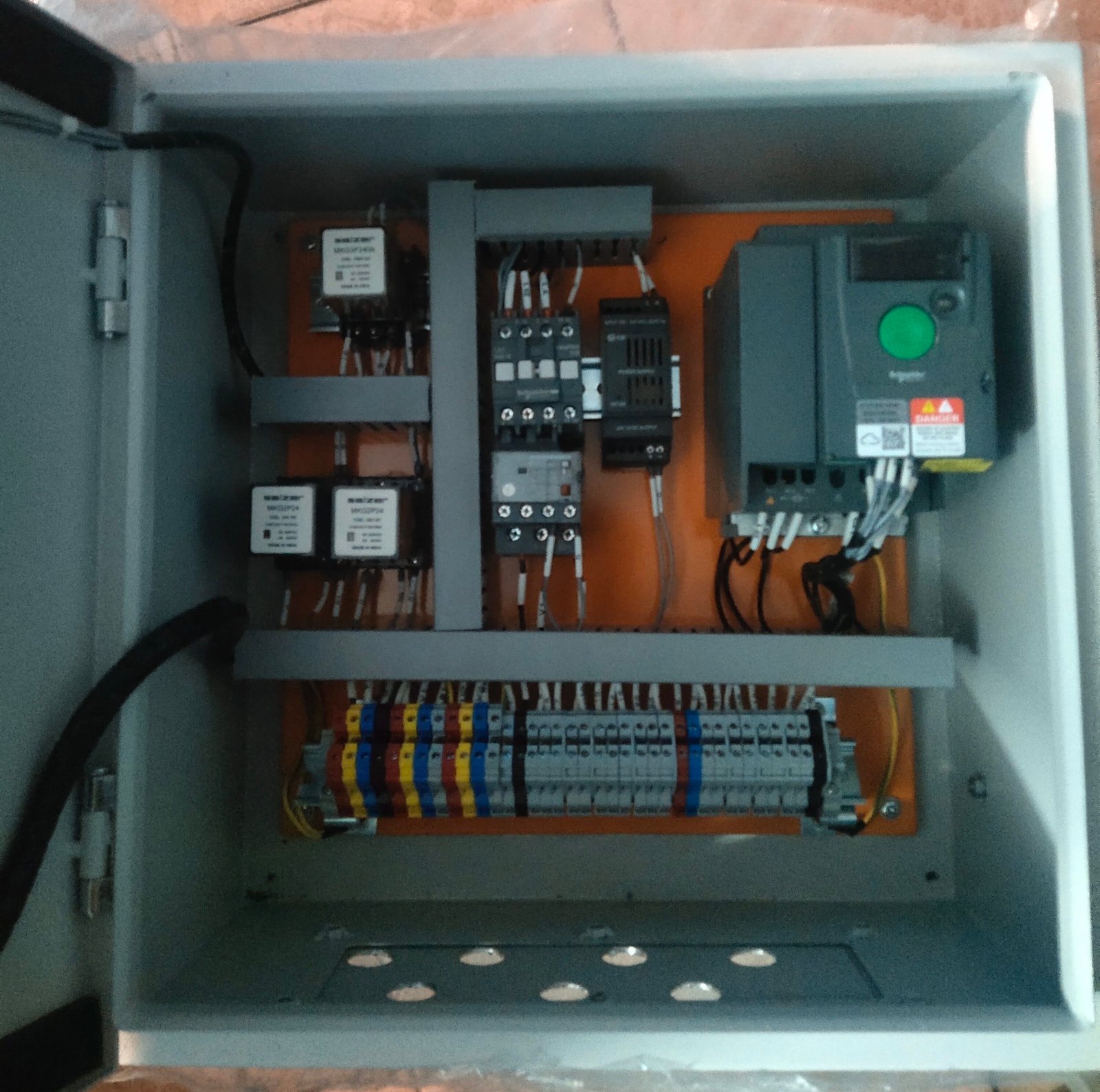Trinity Power Factor Controllers (APFC relays) are intelligent, RMS-based devices that manage reactive power by switching capacitor banks in real time. With programmable PF targets, site-configurable inputs, accurate VAR-based control, and robust performance, they offer reliable, cost-effective PF correction for industrial, commercial, and renewable energy systems. Trinity Energy+1
Description
The Trinity Power Factor Controller, also called an APFC relay, is a smart device that monitors your electrical system’s power factor and automatically switches capacitor banks accordingly. Equipped with true RMS measurements and microcontroller-based logic, it maintains efficient power usage by dynamically adjusting reactive power and minimizing utility penalties. Variants like APFCR, Newton+, and AccuVar offer a spectrum of features from economy models to advanced, fast-switching units. Trinity Energy+1
Key Specifications
PFC1729 Model
-
Display Panel: 144 × 144 mm, panel-cutout 138 × 138 mm
-
Power Supply: 80–500 VAC, 50–60 Hz
-
Voltage Input: 50–300 V L-N or 50–500 V L-L
-
Current Input: 1A or 5A CT (site-selectable), reading 5–9995 A
-
Switching Output: Relay, up to 230 VAC & 1000 W
-
Accuracy: PF & readings ±1.0%, excellent mechanical/electrical life
-
Operating Temp: 10–50 °C, Depth: 55 mm, Weight: ~0.56 kg Trinity Energy
APFCR / Newton+ Series
-
Phase Measurement: Single-phase (3P4W system), voltage up to 300 V L-N
-
Current Input: 1A or 5A CT, reading range 0–5000 A
-
Supply Power: SMPS type, 80–480 VAC
-
Switching: Relay output up to 250 VAC & 1000 W
-
Display: LED/LCD indicating PF, VAR, stages (APFCR: 144 × 144 mm, others: 96 × 96 mm)
-
Accuracy: Voltage ±0.5%, Current ±0.25%, PF ±1.0%
-
Min Operating Currents: VAR mode: 1 % of CT primary; PF mode: Newton+ requires 2.5%, others 6% Trinity Energychintancorpn.com
Features
-
True RMS Measurement ensures accurate readings under loads and distortion
-
Programmable PF range: 0.800 to 1.000 (Lag/Lead)
-
Configurable Time Delays: Normal (40–300 s) or Fast (1–10 s) switching
-
Manual / Auto modes, LED stage indication, alarm/trip for voltage or PF anomalies
-
Site-selectable Input Types: Phase-to-phase or phase-to-neutral, with or without capacitor CT Trinity Energy+1
Applications
-
Industrial settings with heavy inductive loads: motors, compressors, welders
-
Commercial buildings (malls, hospitals, offices) to avoid PF penalties
-
Renewable energy systems and power distribution panels
-
Motor Control Centers and substations for smart reactive power management
Advantages
-
Maintains PF close to unity, improving energy efficiency and reducing penalties
-
Enhances voltage stability and extends the life of equipment
-
Flexible configuration (VAR-based control, adjustable thresholds)
-
Broad compatibility with various installation setups
Disadvantages
-
Requires expert commissioning and occasional maintenance
-
Capacitor banks may need periodic inspections or replacements
-
PF accuracy may be affected by harmonic distortions if not addressed


